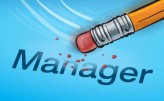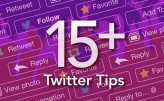What To Pack When Preparing for a Web Design Journey
 So you’ve decided to have a new website created by your favorite website design company. Chances are, you’re focusing more effort than ever on your company’s internet presence. And for good reason. More of your current and future customers are using the internet to find out more about your products and services. And now you’re wondering how it’s going to turn out – not to mention the all-important question “when will it be done?” …Looking back on the 100 or so websites I have been involved in, the ones that I am most proud of and where the client was most satisfied share these three things:
So you’ve decided to have a new website created by your favorite website design company. Chances are, you’re focusing more effort than ever on your company’s internet presence. And for good reason. More of your current and future customers are using the internet to find out more about your products and services. And now you’re wondering how it’s going to turn out – not to mention the all-important question “when will it be done?” …Looking back on the 100 or so websites I have been involved in, the ones that I am most proud of and where the client was most satisfied share these three things:
The Site Appeals To The Business’ Target Audience
Of course for this to happen, the business owner must define who buys their products and services. Create a short list of audience types and include the most important characteristics such as industry, position, age, gender and how comfortable they are with technology. What types of information might they want to view first?
What marketing approaches have worked best for the business in the past? By reviewing your past successes, your designer will gain a better understanding of what appeals most to your target audiences. Be sure to maximize consistency across all media by providing samples of electronic and print marketing pieces that you currently use and that the site should support and coordinate with. If the business has official colors and fonts the site should utilize them. The company logo should be provided in a high resolution format for best quality appearance. If the designer will be providing a new logo design during the website design process, you may want to provide a short list of “brand attributes” to help in the design of a new logo. Write down words that describe the company’s strengths, such as Fast, Friendly, Easy To Use, Innovative, Professional, Fun, Efficient, Creative. Stock and custom photography can be used to highlight the most important aspects of the business. Any custom marketing photos owned by the business should be collected in the original, highest resolution format you have. The designer will usually adjust and enhance the colors in your photos if they have any color quality issues. Some typical file formats for high resolution logos and images are JPG, EPS and TIF. If possible avoid using the GIF file format, as it is less likely to contain high resolution data.
The Site Features Technology, Functionality And Content That Serves The Visitor
What types of features and functionality will the site have? How will the client and end-users interact with the site? What specific action(s) do we want the visitor to take? A basic understanding of how the main features will work is needed by the designer, especially if they will be creating wireframes or comps of the customized features for the development team to use. Providing links to examples of sites that have similar functionality can jump-start the process. Sometimes off-the-shelf solutions can provide more complex features at a lower cost.
Some designers will tell you that a glossy, fresh design will knock your customers socks off and therefore increase your business leads. Okay, I’ll admit it, I love a great looking site as much as the next guy. And who doesn’t like new leads? But a professional appearance is less important for the success of a website than the content. Sure the design of your website is important, But the content is what the site visitor is there for. The information must be be presented in ways that respect the phases of the buying process. Careful attention should be paid to producing the highest quality content including text, audio and especially video. Adding social media feeds can increase engagement on the site, but too many feeds will increase the time the website takes to load.
The Site Ranks Well For Keywords That Attract Customers To The Business
How important is your site’s search ranking for your business? Some businesses thrive on search engine traffic. Others direct customers to their site and don’t plan for online lead generation. It is important to discuss the business model and search performance goals with your designer, so that their subsequent recommendations can support your goals. What keywords do you think will draw customers? Starting with your list the designer and development team will recommend additional relevant popular keywords. Once the keyword list is approved by you the content and site pages can be optimized for the terms, allowing targeted visitors to find your website when searching online. For a website to generate visitor traffic, your keywords should be used in the main navigation buttons. For example, let’s say you’re an interior designer. You may have been considering a main navigation button called “Services” to tell your customers all about your service offerings. If there are many other interior designers in your region currently on the first page of the search results, then your designer may suggest that you name that navigation button “Interior Design Services” to give your site a better chance of ranking well.
So You’ve Given Your Designer Everything They Need – Now What?
The number one question I am asked during the development of a website is “when will it be done?”. It is in the best interest of both the client and designer to launch the new site as quickly as possible. To make sure your website gets done on time, focus on a few simple steps:
- Get a head start by writing your content while you are interviewing web design companies. List any ideas you have for possible content that could be created. The website team may recommend new content be developed to boost online visibility or to meet the needs of your website users.
- If you are providing all the content, set a date when it will be ready for the development team to add to the site. If all of the site content is ready around the time of final design approval, then the development team can more easily adhere to the established timetable.
- Once the website is started, have your website team create a production schedule, and have them supply an updated schedule if the completion date is expected to change.
- Communicate with your team to make sure they have what they need to move forward throughout the various stages of production.
The After Launch Plan
Consider who will provide website hosting and ongoing tech support. How will email hosting be handled? If the developer handles the website they can be more accountable for the success of the website including email issues, database functions and up-time.
Ready, Set… Launch!
So you’ve followed the tips above and your successful website is ready to be shown to the world. To help judge the long-term success of the website you may want to consider looking at visitor statistics using a tool such as Google Analytics. Provide analytic data from your previous site, if available, to your website team so they may study keyword data and take a snapshot of how the old site performed prior to the launch of the new one.
A big thank you to our client Ovaleye Cloud Services for originally publishing this as a guest blog post on their blog, Preparing to Work With a Web Designer.


